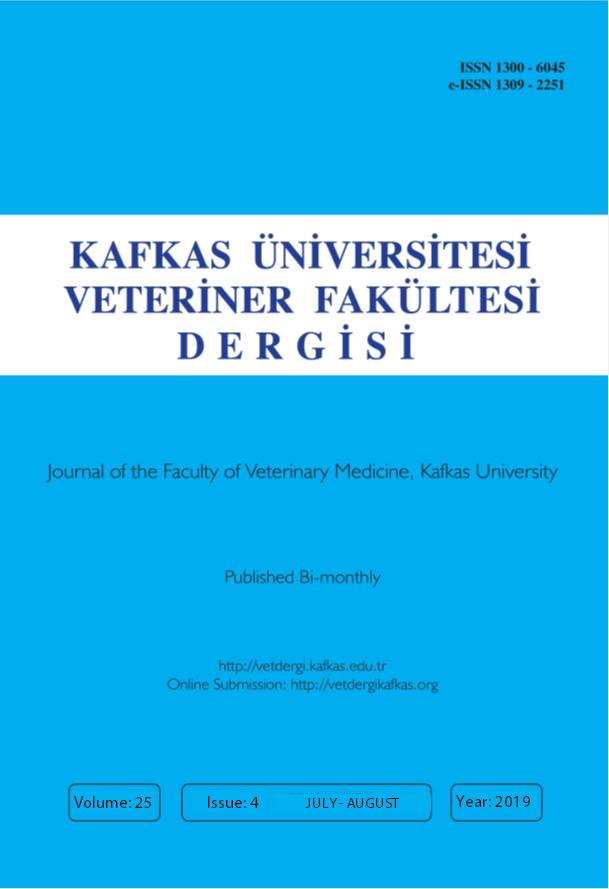
This journal is licensed under a Creative Commons Attribution-NonCommercial 4.0 International License
Kafkas Üniversitesi Veteriner Fakültesi Dergisi
2019 , Vol 25 , Issue 4
Enzymological Properties and Nematode-Degrading Activity of Recombinant Chitinase AO-379 of Arthrobotrys oligospora
1Key Laboratory of Control and Prevention of Animal Disease of Xinjiang Production & Construction Corps, College of Animal Science and Technology, Shihezi University, Shihezi, Xinjiang, 832003, CHINA2College of Animal Science and Technology, Xinjiang Agricultural Vocational and Technical College, Changji, Xinjiang 31100, CHINA
3State Key Laboratory for Sheep Genetic Improvement and Healthy Production, Xinjiang Academy of Agricultural and Reclamation Science, Shihezi, Xinjiang, 832000, CHINA DOI : 10.9775/kvfd.2018.20603 Chitinase is an important virulence factor produced by nematode trapping fungi in the process of infection, and plays an important role in the cleavage of nematodes and their eggshells. In this study, the cDNA sequence of Arthrobotrys oligospora chitinase AO-379 was amplified by RT-PCR and inserted into the vector pPIC9K to induce the expression of AO-379 in Pichia pastoris GS115. The recombinant AO-379 (reAO-379) was purified by nickel ion affinity chromatography, and enzymological properties and nematode-degrading activity of reAO-379 was analyzed. SDS-PAGE and Western blot analysis showed that the reAO-379 with molecular weight of about 44 kDa was successfully obtained. The reAO-379 showed strong chitinase activity at pH 5.5 and 30°C. Using reAO-379 to treat Strongylus equinus, Caenorhabditis elegans and Haemonchus contortus for 12, 24, and 36 h , the killing rates of reAO-379 in S. equinus were 42%, 89% and 100%; in C. elegans were 50%, 90% and 97%; in and H. contortus were 53%, 62% and 84%, respectively. Using reA-379 to treat Fasciola hepatica and Dicrocoelium chinensis eggs for 24, 48 and 72 h, the degradation rates of reAO-379 were 12%, 43% and 65% in F. hepatica eggs, and were 15%, 33% and 55% in D. chinensis eggs, respectively. Our study suggests that the reAO-379 is potentially valuable for development of biological control agent against digestive tract nematodes in livestocks. Keywords : Chitinase AO-379, Molecular characteristics, Expression, Nematode-degrading activity, Arthrobotrys oligospora










